





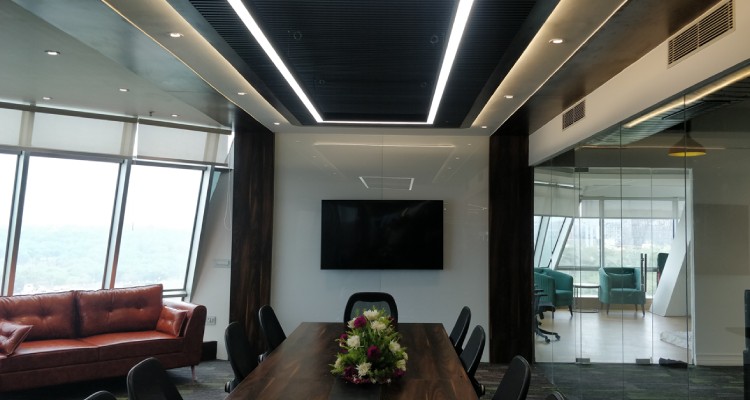
We spend a significant amount of time in our lives at work to give our company an identity and an opportunity to create our culture. An office brings employees together to collaborate, create and innovate which ultimately leads to a better product or service; and provides social interaction for employees. So here we brief you about the types of office spaces to be created for employees who spend a large part of their day in an office, it is crucial to create a space that’s functional, visually appealing, comfortable, and inviting—all of which promote productivity and efficiency. For customers, office design sets the tone for a business and tells a story about the brand, professionalism, and success.
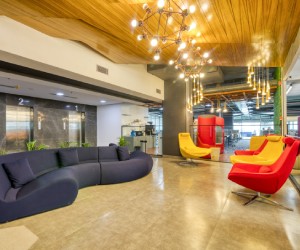

1. Traditional Office
This is the typical office space design layout that we all know of. They are normally located in an individual building. In a traditional office space, you have to deal either through brokers or with landlords directly. It can be furnished or unfurnished in nature. This model often also dictates that each person has their own desktop PC, with all their local files contained on it, and their own cupboard with things they need for work.
2. Private Office
Privacy is important in business, especially when working on confidential plans, discussing personal information or viewing and storing sensitive files or paperwork. Private offices tend to be smaller, with lockable doors, blinds on windows, soundproof walls and buzzer access. Private offices are a cost-effective way of renting commercial space as you only pay for the floor space that you need while enjoying access to communal meeting rooms, internet connection and breakout spaces.
3. Co-working Office
Coworking spaces allow you to work alongside other businesses in open communal offices. You can hire a single desk or multiple desks to fit your whole team either by hotdesking, where you work in any available space and remove all your things at the end of the day, or by renting a dedicated desk which means you can keep your workstations set up for the duration of your tenancy.
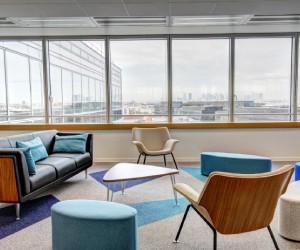
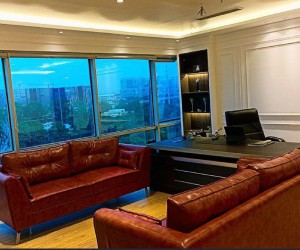
4. Serviced Office
Serviced office spaces are managed and supported by an onsite service team. You have a dedicated receptionist with mail-handling, phone-answering and PA and secretary services. It’s often thought of as a landlord and tenant arrangement, with the company taking out a long-term lease on the real estate. Your office space and the communal areas are looked after for you while flexible billing and easy leases take the hassle out of office renting.
5. Virtual Office
A virtual office gives you all the services of a managed office without the physical space. Ideal for companies who work out in the field, meet with clients or work from home, a virtual office gives you a business address, call-handling and reception services and somewhere to deliver your mail when you don’t need the physical office space, but they can include discounted desk hire or meeting room hire. Virtual office saves you from the hassles of owning an office space and adds mobility to your business.
6. Hybrid Office
A hybrid workplace model mixes in-office and remote work to offer flexibility and support to employees. In a hybrid workplace, employees typically enjoy more autonomy and better work-life balance – and are more engaged as a result. Employers benefit by building a more productive, healthy, stable workforce.
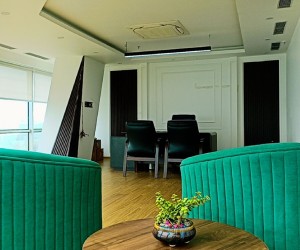
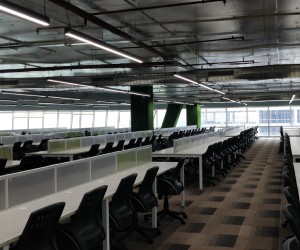
7. Shared Space
Shared spaces provide a flexible workspace. In this arrangement, workers are sharing the space with other people who may or may not work for their own company. Often called coworking spaces, they are the ultimate flexible office space, and are popular with the creatives, freelancers, digital nomads, startups and entrepreneurs who pop in and out all day.
8. Customisable Office
Most of the time, the property owner determines on the furniture arrangement and décor of a leased office, but with a customisable office, the tenant has a little more flexibility. It means they can rearrange desks and seating, create break-out spaces, and perhaps even change some semi-permanent features, like having their branding on the walls. Companies now desire to create an office space that showcases their company image but at the same time also meets the needs of their staff.


9. Home Office
A home office is a space designated in a person’s residence for official business purposes. It provides a space for those that are self-employed or work remotely for an employer. Working from home has its benefits like, zero commute time, no extra expenses for office space and you can work from the comforts of your home. Freelancers and startup founders mostly prefer home offices.
10. Day Office
Day offices are fully-equipped, private office spaces that you can reserve for as little as one hour or as much as a full day. Think of day offices as part-time offices. Yes, it’s a desk, chair, four walls, and a door for your exclusive use, but it’s only yours for one workday. The day office is a really flexible place to do work, as you can hire it for just a day – and some providers let you hire it by the hour.


Leave A Comment